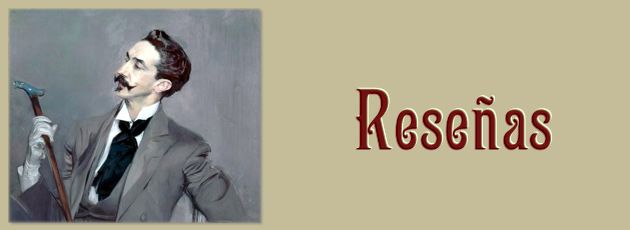
Havana Habit
Gustavo Pérez Firmat,
New Haven and London: Yale University Press, 2010.
Marta Hernández Salván, University of California, Riverside
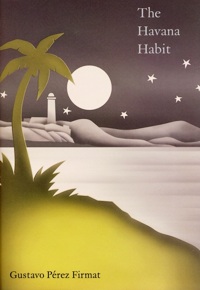 Havana Habit, Gustavo Pérez Firmat’s last work is without a doubt his wittiest and most ironic. This work studies American culture’s portrayal of Cuba and it follows the author’s interest in what Marie Louise Pratt has called “the contact zone,” the space where cultures clash and reconfigure themselves. In this sense this book is a continuation of Life in the Hyphen, his analysis of Cuban-American culture of the “in-between” generation. These two books belong to a long tradition of works in the Latin American archive about cultural identity. On the one hand, the canonical corpus of Latin American works about cultural identity embedded in the project of nation building (Eugenio María de Hostos, José Martí, Fernando Ortiz, José Vasconcelos, etc). On the other hand, it belongs to the contemporary body of interdisciplinary work about the transnational nature of Latin American culture and identity (Cornejo Polar, Roberto Schwarz, García Canclini, Silviano Santiago, etc). Lastly and most notably, Pérez-Firmat’s work follows into the disciplines of Latino Studies and Chicano Studies (Richard Rodríguez, Gloria Anzaldúa, Cherrie Moraga, Coco Fusco, José Saldivar, Juan Flores, etc). Taking these genealogies into account, Havana Habit gives an interesting twist to the study of cross-cultural relations in that it is written from a distinctively apolitical point of view. That is, the author refuses to take part in the debate that seeks to distinguish between hegemonic and subaltern cultures. It also analyzes a well known, yet unexamined issue: the American projection of its own desires and fears onto the representation of Cuban culture.
Havana Habit, Gustavo Pérez Firmat’s last work is without a doubt his wittiest and most ironic. This work studies American culture’s portrayal of Cuba and it follows the author’s interest in what Marie Louise Pratt has called “the contact zone,” the space where cultures clash and reconfigure themselves. In this sense this book is a continuation of Life in the Hyphen, his analysis of Cuban-American culture of the “in-between” generation. These two books belong to a long tradition of works in the Latin American archive about cultural identity. On the one hand, the canonical corpus of Latin American works about cultural identity embedded in the project of nation building (Eugenio María de Hostos, José Martí, Fernando Ortiz, José Vasconcelos, etc). On the other hand, it belongs to the contemporary body of interdisciplinary work about the transnational nature of Latin American culture and identity (Cornejo Polar, Roberto Schwarz, García Canclini, Silviano Santiago, etc). Lastly and most notably, Pérez-Firmat’s work follows into the disciplines of Latino Studies and Chicano Studies (Richard Rodríguez, Gloria Anzaldúa, Cherrie Moraga, Coco Fusco, José Saldivar, Juan Flores, etc). Taking these genealogies into account, Havana Habit gives an interesting twist to the study of cross-cultural relations in that it is written from a distinctively apolitical point of view. That is, the author refuses to take part in the debate that seeks to distinguish between hegemonic and subaltern cultures. It also analyzes a well known, yet unexamined issue: the American projection of its own desires and fears onto the representation of Cuban culture.
The book offers and overview of how American popular culture (1850s-1950s)—mostly TV shows, songs, popular dance 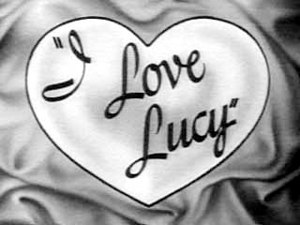 — has orientalized Cuban culture. Three main ideas contribute to the book’s originality. First, it posits that exoticization is a collaborative process amongst the two cultures. That is, the exotic also serves the function of self-definition and differentiation for Cuba, and Cubans have also exploited cultural stereotypes to their advantage. As a consequence of this, the book shows that this process isn’t the result of American imperialism only, but also an invention that comes from the projection of America’s own fears and desires. Third, the originality of the project stems from the fact that it analyzes a culture without a geographical location. In other words, the work argues that the reinvention of Havana leads to a representation of a city, than more than a nation, is actually an atmosphere, a “bilongo,” that is, the force that attracts us to a city and puts us under its spell. What is striking about this atmosphere is that it keeps the same aura in all reinventions of the century (1850-1950), as that of a paradise outside of history. In other words, the book ultimately argues that for the American imagination Cuba has always been the eternal land of rum, rump, and rumba.
— has orientalized Cuban culture. Three main ideas contribute to the book’s originality. First, it posits that exoticization is a collaborative process amongst the two cultures. That is, the exotic also serves the function of self-definition and differentiation for Cuba, and Cubans have also exploited cultural stereotypes to their advantage. As a consequence of this, the book shows that this process isn’t the result of American imperialism only, but also an invention that comes from the projection of America’s own fears and desires. Third, the originality of the project stems from the fact that it analyzes a culture without a geographical location. In other words, the work argues that the reinvention of Havana leads to a representation of a city, than more than a nation, is actually an atmosphere, a “bilongo,” that is, the force that attracts us to a city and puts us under its spell. What is striking about this atmosphere is that it keeps the same aura in all reinventions of the century (1850-1950), as that of a paradise outside of history. In other words, the book ultimately argues that for the American imagination Cuba has always been the eternal land of rum, rump, and rumba.
While most of the chapters focus on music and dance (rumba, latunes, mambo, and bolero), there are also three other chapters devoted to other things Cuban: the American sitcom I love Lucy, Revolution, and Cuba’s famous cigars and drinks (Havanas, Cuba Libre, mojitos, daiquiris). The first chapter gives an account of the making of the city by the different colonial powers that ruled over it. It explains how Havana became a cosmopolitan city after the ban on trade imposed by Spain was lifted by the British, and how Americans began to visit Havana in the twenties and thirties, which by then had the 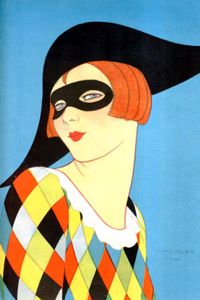 highest wealth per capita in the world. It is then that Havana became the last bastion of Manifest Destiny and that it also turned into an alternative to the legacy of American Puritanism. Havana, which had been until then the paradise island that Columbus described when he first set foot in the Americas, was transformed into the Eden of sex, gambling and alcohol. This is how Havana was represented in the covers of Life magazine, especially in Massaguer’s designs of the Massa-girl, a pun of the author’s name and the Spanish word for “flesh.” Interestingly enough, this chapter corroborates the thesis of the book as it concludes that most Americans never visited Havana, and that the images of the city rose from popular culture and from the Cuban Tourist Commission.
highest wealth per capita in the world. It is then that Havana became the last bastion of Manifest Destiny and that it also turned into an alternative to the legacy of American Puritanism. Havana, which had been until then the paradise island that Columbus described when he first set foot in the Americas, was transformed into the Eden of sex, gambling and alcohol. This is how Havana was represented in the covers of Life magazine, especially in Massaguer’s designs of the Massa-girl, a pun of the author’s name and the Spanish word for “flesh.” Interestingly enough, this chapter corroborates the thesis of the book as it concludes that most Americans never visited Havana, and that the images of the city rose from popular culture and from the Cuban Tourist Commission.
The second chapter is an analysis about “latunes:” songs with Latin beats and English lyrics. Latunes draw on a variety of genres but Cuban rumba is what prevails and even the best composers, including jazz musicians, contributed to the latunes repertoire. The main point of this chapter is to show that latunes created a whitened version of the racially specific Spanish lyrics. The Americanized version of rumba had little to do with the Afro-Cuban tradition, and the lyrics never mentioned Latin America or Cuba. Paradoxically, the author argues that the genre became so popular that in spite of the overwhelming American presence 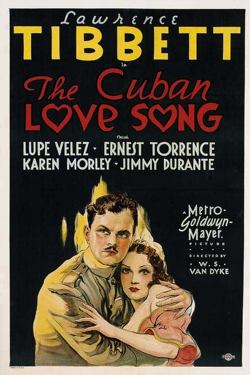 in the island, Cuba had a profound impact in the American cultural imaginary. American values didn’t disappear from the lyrics, however, and racial whitening transformed the original Spanish lyrics of popular songs like “Mama Inés.” The author then demonstrates the central role of dance and music for the creation of the Cuban “atmosphere” by discussing mambo, rumba, and Hollywood “maraca musicals” in the following chapters. In these musicals, Latin American cultural references were always “cubanized”, as it happened in Down Argentina Way for example, a musical inspired in rumba instead of tango. What’s very interesting about this chapter is the idea that some of these musicals, such as the Cuban Love Song for instance, can be interpreted as an allegory of American paternalism towards Cuba, but also as an indicator that America needs Cuba as a counterpart in order to complete itself. The chapter compares Cuba to the American West because both stand as a place apart, a frontier of sorts but with opposite values. For example, American Westerns celebrate individualism, whereas maraca musicals identify Latiness with community, which is what explains the proliferation of conga lines. During the 50s, the maraca musicals were replaced by film noirs set in Havana, as the author discusses in chapter seven, and their plot repeated the structure of maraca musicals, except that Havana was no longer represented as a safe haven, but as a path for corruption and murder.
in the island, Cuba had a profound impact in the American cultural imaginary. American values didn’t disappear from the lyrics, however, and racial whitening transformed the original Spanish lyrics of popular songs like “Mama Inés.” The author then demonstrates the central role of dance and music for the creation of the Cuban “atmosphere” by discussing mambo, rumba, and Hollywood “maraca musicals” in the following chapters. In these musicals, Latin American cultural references were always “cubanized”, as it happened in Down Argentina Way for example, a musical inspired in rumba instead of tango. What’s very interesting about this chapter is the idea that some of these musicals, such as the Cuban Love Song for instance, can be interpreted as an allegory of American paternalism towards Cuba, but also as an indicator that America needs Cuba as a counterpart in order to complete itself. The chapter compares Cuba to the American West because both stand as a place apart, a frontier of sorts but with opposite values. For example, American Westerns celebrate individualism, whereas maraca musicals identify Latiness with community, which is what explains the proliferation of conga lines. During the 50s, the maraca musicals were replaced by film noirs set in Havana, as the author discusses in chapter seven, and their plot repeated the structure of maraca musicals, except that Havana was no longer represented as a safe haven, but as a path for corruption and murder.
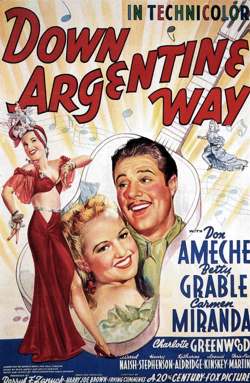 Another symbol of Latiness arrived with mambo, the topic of the following chapter. This section is remarkable because it shows two opposite modes of cultural engagement. The first one has to do with mambo, the most popular dance exported to America and yet, the only one that could never be absorbed into American mainstream popular music. Unlike mambo, chachacha was easier to assimilate because it was a more contained and slower dance that didn’t clash so much with American standards of decorum. The reception of mambo showed fascination and puzzlement, feelings that in many cases were associated with fear for the unknown. Because of that, mambo was categorized as a primitive and barbaric dance, and as a word, it was given extraneous etymologies. Chachacha, on the contrary, influenced many Rock and Roll tunes by blending in so easily that it became unnoticed in many songs. The following chapter goes back to an analysis of I love Lucy, an American sitcom also analyzed in Life on the Hyphen. As he had already argued in the former book, the author points out that by disregarding
Another symbol of Latiness arrived with mambo, the topic of the following chapter. This section is remarkable because it shows two opposite modes of cultural engagement. The first one has to do with mambo, the most popular dance exported to America and yet, the only one that could never be absorbed into American mainstream popular music. Unlike mambo, chachacha was easier to assimilate because it was a more contained and slower dance that didn’t clash so much with American standards of decorum. The reception of mambo showed fascination and puzzlement, feelings that in many cases were associated with fear for the unknown. Because of that, mambo was categorized as a primitive and barbaric dance, and as a word, it was given extraneous etymologies. Chachacha, on the contrary, influenced many Rock and Roll tunes by blending in so easily that it became unnoticed in many songs. The following chapter goes back to an analysis of I love Lucy, an American sitcom also analyzed in Life on the Hyphen. As he had already argued in the former book, the author points out that by disregarding 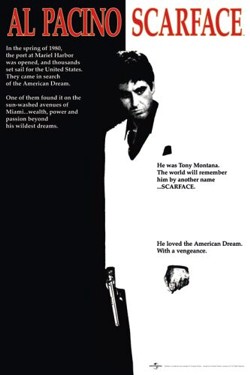 the cultural origin of Ricky Ricardo, the Cuban character played by Desi Arnaz, critics have whitened it and haven’t taken into account the cultural politics that the show displays.
the cultural origin of Ricky Ricardo, the Cuban character played by Desi Arnaz, critics have whitened it and haven’t taken into account the cultural politics that the show displays.
The chapter about the revolution is disappointingly short, and while incisive and humorous, it fails to keep the ironic distance of previous sections. The author argues that in spite of the economic downturns and the disturbing political revolts, Cuban’s regimes always welcomed visitors and kept them safe. He also adds that chaotic political conditions in Cuba never had any repercussions for the USA during the first half of the twentieth century. But the author never mentions that most Cuban presidents of the Republica, including Batista, had taken power under America’s supervision and acquiescence to ensure the protection of their own interests. This is perhaps what the author doesn’t take into account when he comments on Batista’s amicable character in opposition to Castro’s anti-Americanism. How could Cuba not be safe for Americans before the Revolution if they had been policing it since the Spanish-American war?
His analysis of the two figures of the Revolution, however, is pointed and witty, especially when he argues that American representations of Ché and Fidel draw on the old stereotype of the old Latin lover and revolutionary mystique, specially in the case of 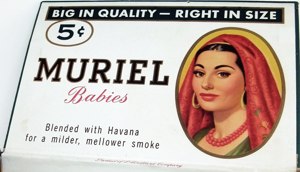 Ché who always appears as the real leader of the Revolution, whereas Fidel is represented as infantile and hedonistic. The last part of the chapter talks about how Miami exiles have also inspired characters such as Mario Montanta in Scarface, and how Little Havana has also seized the American imagination as a make-believe and as Havana’s political mirror image. Elian’s case is an illustration of this point, and one in which the author identifies with Elian’s American relatives, and thus looses the ironic distance that makes the book so interesting. The last section of the chapter talks about the representation of Contemporary Cuba as the bastion of pre-revolutionary remnants (beaches, wheather, jineteras, American cars, etc.), but it doesn’t point to the other prevalent image of Cuba as the last defender of socialism, and promoter of revolutionary nostalgia. The final chapter of the book deals with the historical havocs of Havana cigars, as well as their consumption and production patterns. Most notably, we are introduced to one of the Americanized versions of Havana cigars: the Muriel, a mild cigar blending, known for its sexually suggestive advertisements. Interestingly enough, Muriel is represented as a racially mixed woman, who like latunes or maraca musicals offer adventures without risk.
Ché who always appears as the real leader of the Revolution, whereas Fidel is represented as infantile and hedonistic. The last part of the chapter talks about how Miami exiles have also inspired characters such as Mario Montanta in Scarface, and how Little Havana has also seized the American imagination as a make-believe and as Havana’s political mirror image. Elian’s case is an illustration of this point, and one in which the author identifies with Elian’s American relatives, and thus looses the ironic distance that makes the book so interesting. The last section of the chapter talks about the representation of Contemporary Cuba as the bastion of pre-revolutionary remnants (beaches, wheather, jineteras, American cars, etc.), but it doesn’t point to the other prevalent image of Cuba as the last defender of socialism, and promoter of revolutionary nostalgia. The final chapter of the book deals with the historical havocs of Havana cigars, as well as their consumption and production patterns. Most notably, we are introduced to one of the Americanized versions of Havana cigars: the Muriel, a mild cigar blending, known for its sexually suggestive advertisements. Interestingly enough, Muriel is represented as a racially mixed woman, who like latunes or maraca musicals offer adventures without risk.
Conclusion
What differentiates this book from others cultural analysis, more centered on an anthropological analysis, is as I pointed out previously, its comic tone and apolitical rules of engagement. In this sense, Havana Habit’s style is a remarkable example of choteo, that is, the Cuban ability not to take anything too seriously. In Literature and Liminality: Festive Readings in the Hispanic Tradition (1986), Pérez-Firmat makes a similar argument by stating that he wants to make a defense for critical rudeness, and for relajo. This attitude enables the author to take the higher ground, instead of adopting a defensive position that may be read as the wrong form of cultural pride. The narrow representation of Cuban culture doesn’t say as much about Cubans as it says about Americans, and their projection of fears and disavowal of desires. Cubans don’t take anything too seriously, because they know that one is always doomed to fail. American desire of mimicry or representation is always doomed to fail when it creates a bad copy. The book succeeds in showing that in its ambition to take Cubaness too seriously, American popular culture has become prey to a bad performance. But, this work fails to point out the negative impact of American colonialism. In spite of the two country’s geographical and historical proximity, the Anglo puritan tradition and the accompanying sense of cultural and economical superiority has always prevented Americans from realizing that perhaps there was something to learn from the neighboring island. By the same token, Cubans have reinforced the stereotypes imposed on them by identifying themselves through the gaze of the colonial power, like Frantz Fanon has argued. Overall, however, the book is a great and easy read, and I recommend it highly.

